Direct numerical simulation of turbulence at periodic boundaries
Case directory
$FOAM_TUTORIALS/DNS/dnsFoam/boxTurb16
Summary
The flow in a cube that all six sides are periodic boundaries will be solved until 10 seconds without using a turbulence model. The turbulence generated by the utility boxTurb is used as the initial condition, and after the calculation, the enstrophy 
The mesh and initial conditions are as follows. The analysis area is divided into 16 equal parts in each of the X, Y, and Z directions as mesh.
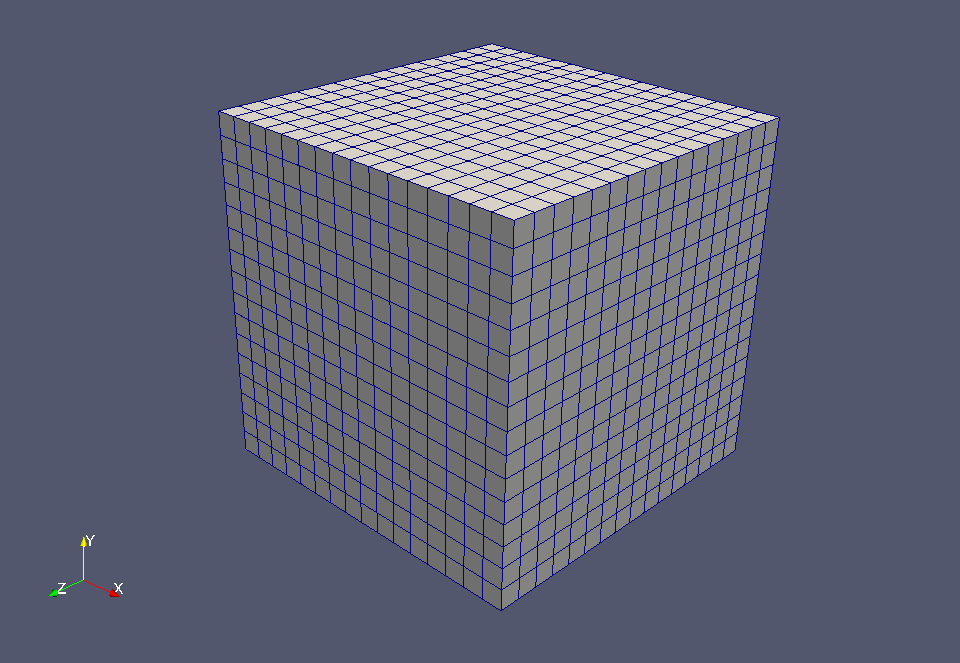 Meshes
Meshes
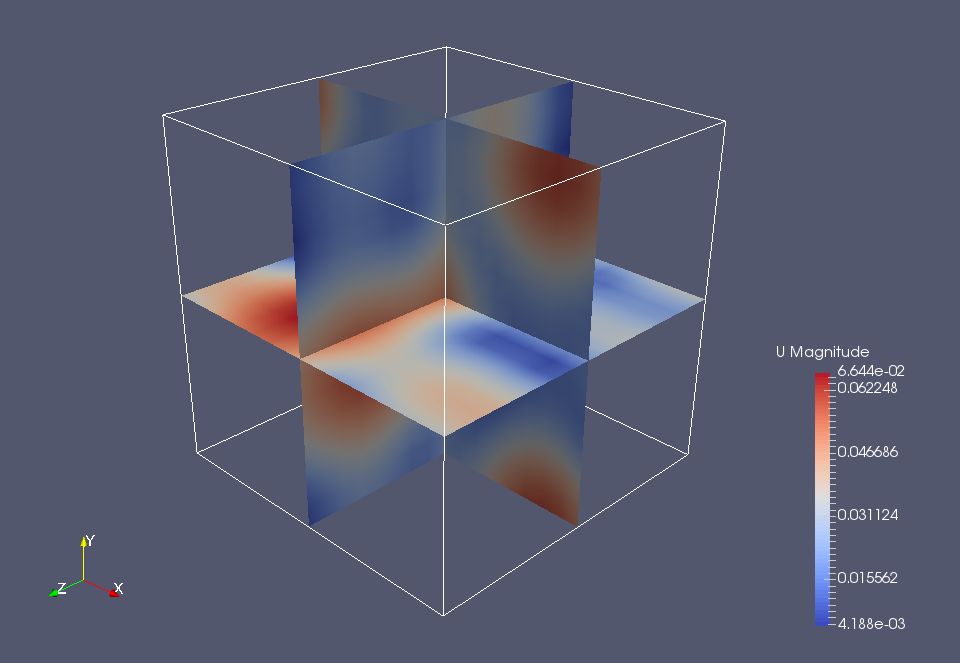 Initial velocity (U)
Initial velocity (U)
After the potential flow calculation, the enstrophy is calculated and output. To visualize the enstrophy, check the "enstrophy" in the "Properties" tab in ParaView.
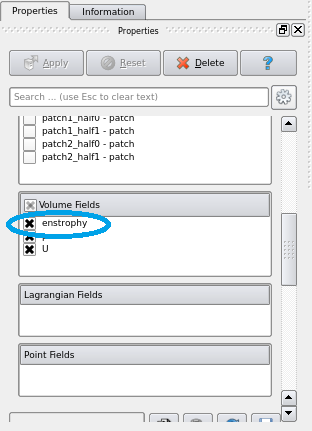 Check "enstrophy"
Check "enstrophy"
The calculation result is as follows.
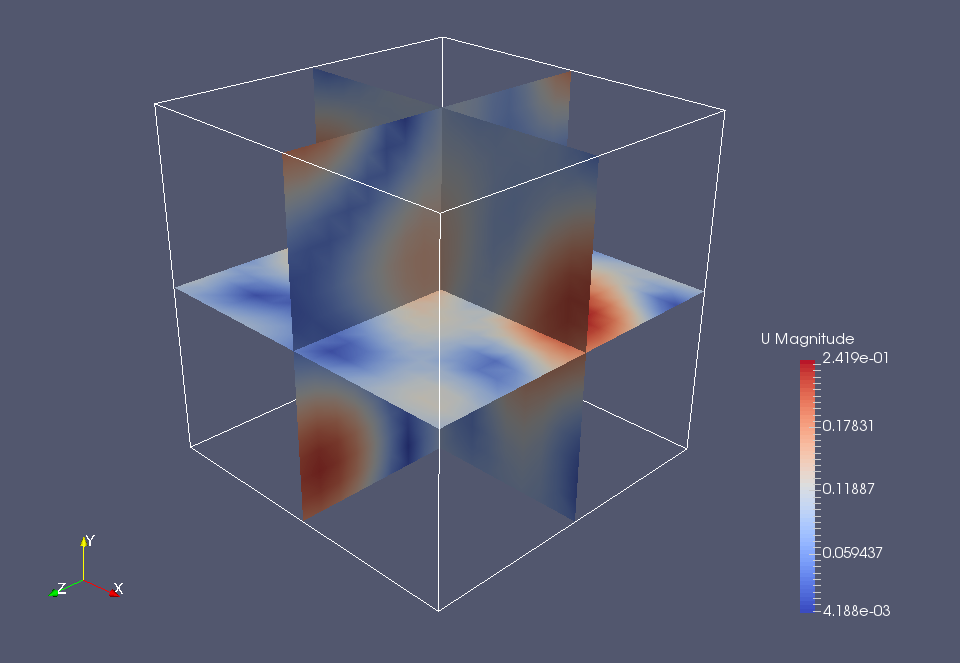 Absolute value of flow velocity at 10 seconds (U)
Absolute value of flow velocity at 10 seconds (U)
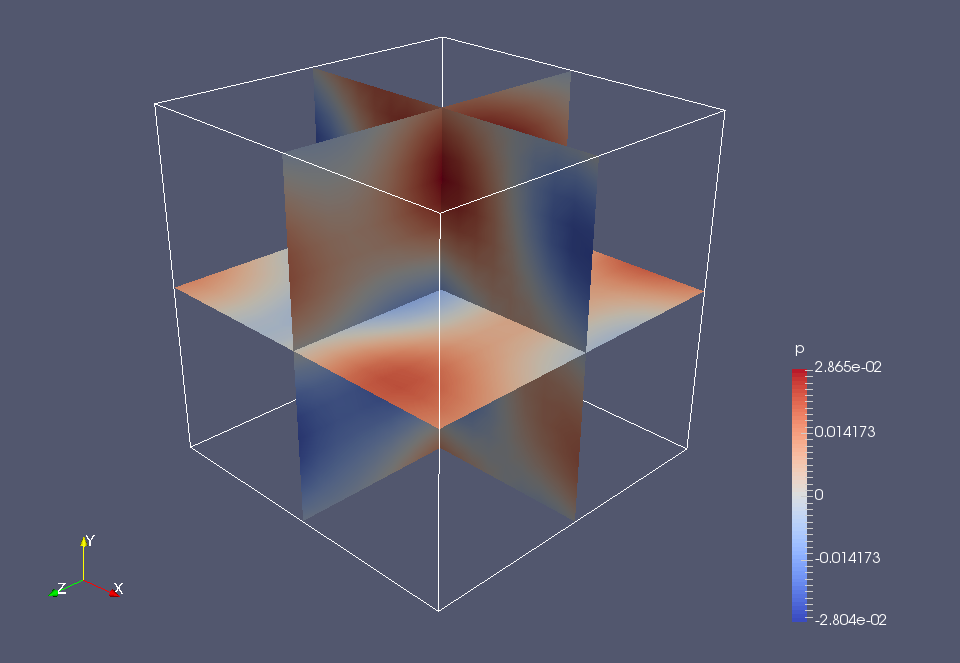 Pressure at 10 seconds (p)
Pressure at 10 seconds (p)
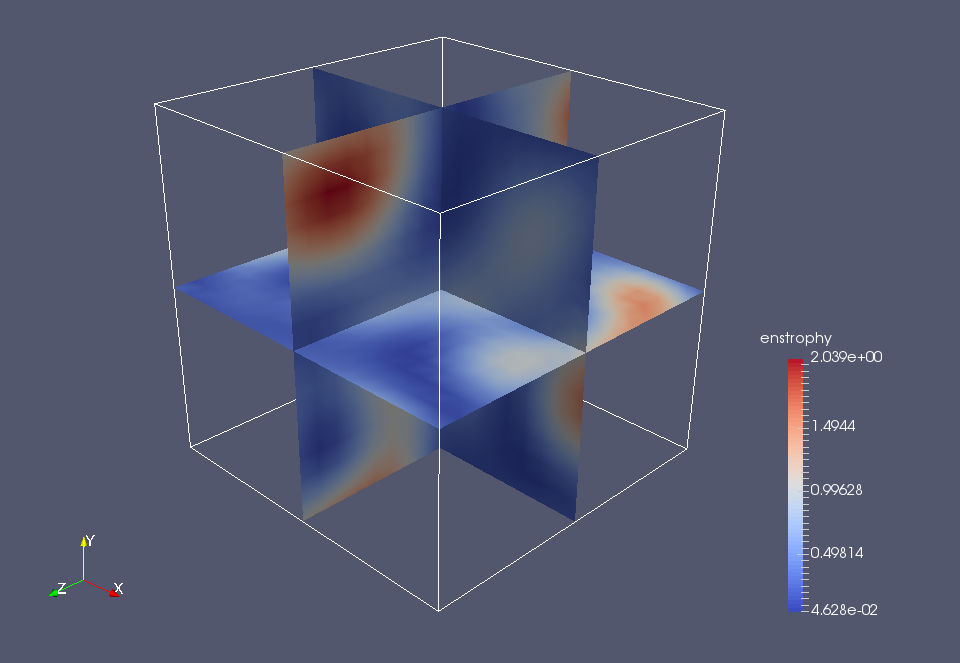 Enstrophy at 10 seconds
Enstrophy at 10 seconds
Since all boundary surfaces are periodic boundaries, momentum is conserved throughout the system and the flow does not decay.
Commands
cd boxTurb16
blockMesh
boxTurb
dnsFoam
postProcess -func enstrophy
paraFoam
The boxTurb generates the initial conditions, and the postProcess calculates the enstrophy.
Calculation time
--- *Single, Core(TM) i7-2600 CPU @ 3.40GHz 3.40GHz